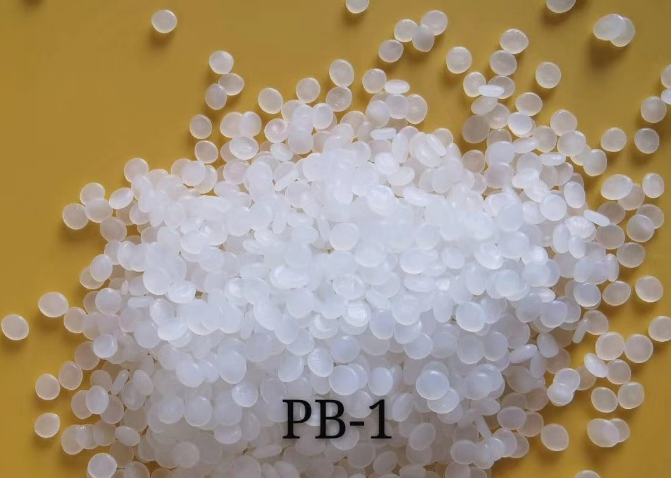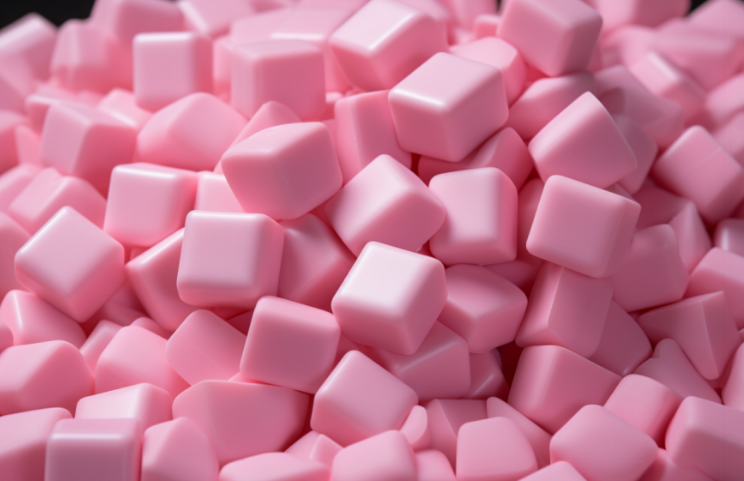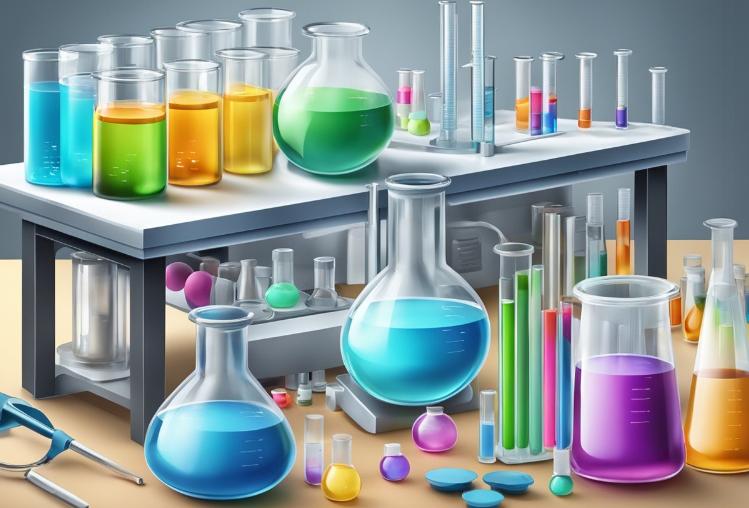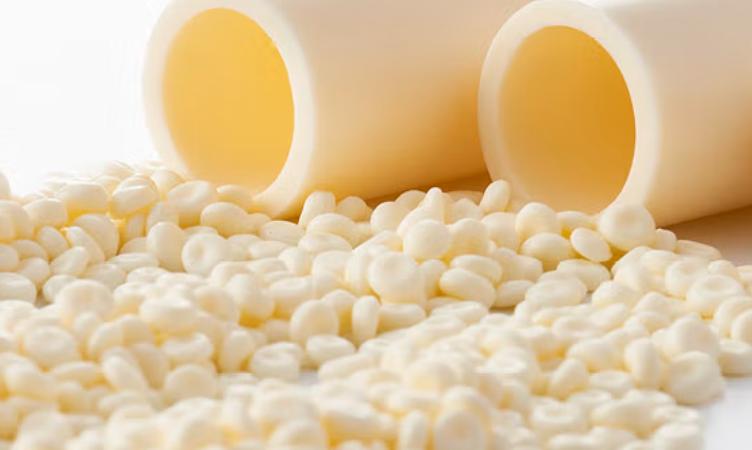Poly(1-butene) (PB-1): The Polymer Set to Revolutionize Industrial Applications
23/09/2024
In the expansive and rapidly evolving field of polymer materials, certain names are frequently at the forefront of industry discussions, with polyethylene and polypropylene being notable examples. However, beneath the surface lies another polymer that, though less well-known, deserves attention—Poly(1-butene) (PB-1). Could this relatively obscure polymer be the solution certain industries have been searching for, just waiting to be fully recognized for its potential? PB-1 offers a unique set of attributes, including an impressive blend of flexibility, strength, and chemical resistance, allowing it to compete with more commonly used polymers in highly specialized industrial applications. This article delves into PB-1’s chemical structure, physical properties, production methods, areas of application, and future innovations, alongside the critical role of CHEMBROAD, a key supplier of this adaptable material.
A Comprehensive Analysis of Poly(1-butene) (PB-1)
Poly(1-butene) (PB-1), a thermoplastic polymer, is synthesized through the polymerization process involving 1-butene, a hydrocarbon classified under the alpha-olefin family. Although PB-1 occupies a somewhat niche segment within the polymer industry, its significance emerges from the unique combination of thermal and mechanical properties it presents. In contrast to widely known materials such as polyethylene and polypropylene, which maintain a dominant position in the polyolefin sector, PB-1 has, over time, quietly earned a reputable standing in specialized sectors where stringent performance specifications are critical to success.

What lends PB-1 particular distinction lies in its semi-crystalline nature, characterized by a structure that incorporates both crystalline and amorphous regions. This dual-phase composition provides the polymer with the ability to combine softness and flexibility with notable durability and strength, rendering it particularly suitable for use in applications that demand a balance of resilience and pliability. As industrial requirements increasingly trend towards more specialized materials, PB-1’s ability to meet these high-performance demands has gained heightened recognition.
In addition to its notable flexibility, Poly(1-butene) (PB-1) is also prized for its thermal resistance, a feature that becomes especially advantageous in settings where extreme temperatures or harsh environmental conditions could otherwise compromise the structural integrity of other polymers. With the consistent availability of this high-performing material being ensured by suppliers such as CHEMBROAD, PB-1 has solidified its role as a dependable solution across a variety of industries, reliably offering both performance and long-term durability.
Chemical Structure and Properties of Poly(1-butene)
The distinct properties exhibited by Poly(1-butene) arise fundamentally from its chemical composition, which is constituted by repetitive butene monomers. This molecular architecture leads to the formation of a polymer that contains both crystalline segments, imparting strength, and amorphous regions, contributing to flexibility. The interaction and equilibrium between these crystalline and amorphous domains culminate in a material that possesses the dual qualities of robustness and malleability, rendering it particularly well-suited for applications where both durability and adaptability are critical.
Among the most prominent features of PB-1 is its exceptional flexibility, a characteristic that distinctly differentiates it from other polyolefins, such as polyethylene and polypropylene. What significantly sets PB-1 apart is its inherent softness combined with a high degree of elasticity, allowing it to undergo substantial stretching without rupture—a property indispensable in industries that necessitate materials capable of withstanding substantial elongation under stress, as is required in the production of pipes and films.
Thermal resistance is another key attribute of PB-1, with its melting point falling between 125°C and 135°C, enabling the polymer to retain its structural cohesion even at elevated temperatures. This thermal stability makes PB-1 particularly suitable for applications involving piping systems and electrical insulation, where materials are often exposed to prolonged heat. Furthermore, the polymer’s resistance to various chemicals, including oils, acids, and other corrosive agents, enhances its durability, ensuring extended lifespan in challenging operational environments.
Through the combination of its core properties—flexibility, thermal resilience, and chemical resistance—PB-1 distinguishes itself from alternative polymers, thus ensuring a strategic advantage in demanding industrial environments.
Mechanical and Physical Characteristics of Poly(1-butene)
In terms of its mechanical attributes, Poly(1-butene) (PB-1) demonstrates excellence in several critical aspects, with its notable resistance to creep being particularly significant. Creep, understood as the slow, progressive deformation a material undergoes under continuous stress, is a phenomenon to which PB-1 has shown a high degree of resistance, making it well-suited for applications where materials are required to withstand long-term pressure, such as in piping systems or structural components under constant load.

A further distinguishing trait of Poly(1-butene) (PB-1) is its considerable impact resistance. Despite the polymer’s softness and inherent flexibility, it is capable of retaining its structural strength when subjected to mechanical stress. This feature ensures that, whether employed in packaging materials designed to withstand rough handling during transit or in structural components facing environmental forces, PB-1 maintains its durability. The ability to combine elasticity with resilience makes PB-1 particularly appropriate for uses where both flexibility and toughness are crucial.
Additionally, PB-1 is recognized for its dimensional stability, meaning that, even when exposed to long-term stress or changes in environmental conditions, it preserves its original shape and dimensions. Whether utilized in high-pressure piping systems or in adhesive formulations, PB-1’s capacity to resist deformation ensures dependable performance across a range of static and dynamic applications.
Manufacturing Processes of Poly(1-butene)
The production of Poly(1-butene) (PB-1) primarily involves catalytic polymerization, usually employing Ziegler-Natta catalysts. These catalysts allow manufacturers to precisely control the polymerization process, enabling them to adjust the polymer’s molecular weight and tailor its properties to suit various applications. This level of customization is one of the key reasons PB-1 is considered such a versatile material.

Once polymerization is complete, PB-1 can be processed using various thermoplastic manufacturing techniques. Common methods include extrusion, injection molding, and blow molding, which enable the formation of PB-1 into different shapes and configurations. For instance, PB-1 can be extruded into pipes, molded into containers, or blown into films, showcasing its adaptability across multiple industries. This ease of processing further contributes to the widespread use of PB-1 in diverse sectors.
An additional advantage of PB-1’s production process is its energy efficiency. Compared to the production of other polymers, PB-1 requires less energy, making it a more sustainable option for environmentally conscious industries. CHEMBROAD plays an integral role in providing high-quality PB-1, ensuring that it meets industry standards while aligning with principles of environmental responsibility.
Applications of Poly(1-butene)
Due to its unique properties, Poly(1-butene) (PB-1) is well-suited to a broad range of industrial applications. One of its most significant uses is in piping and plumbing systems, where PB-1’s resistance to creep and thermal stability allows it to perform exceptionally well. Its ability to withstand variations in pressure and temperature makes it particularly effective in hot and cold water pipes, where reliable performance is essential.

Another major application for PB-1 is in hot-melt adhesives. Its slow crystallization rate enables it to form strong bonds with other polymers, making it a crucial ingredient in many adhesive formulations. Its compatibility with materials like polyethylene and polypropylene ensures its effective use in various adhesive systems.
PB-1 is also frequently used in sealants and films. Its combination of flexibility and transparency makes it an excellent material for food packaging, where both appearance and functionality are important. Its chemical resistance protects against contamination while maintaining its integrity during transportation and storage.
Additionally, PB-1 is an ideal material for wire and cable insulation due to its heat resistance and durability. This makes it well-suited for insulation in environments exposed to both external conditions and electrical currents, further illustrating its versatility in high-performance applications.
Future Trends and Innovations
Looking to the future, Poly(1-butene) (PB-1) is likely to see increased adoption as industries place a growing emphasis on sustainability and performance. One area poised for growth is sustainable packaging, where PB-1’s recyclability and energy-efficient production make it a strong candidate for biodegradable and recyclable solutions.
The development of advanced piping systems is another promising trend for PB-1. Its creep resistance and thermal stability position it as a key material for the next generation of high-performance piping in both residential and industrial settings. With the rising demand for durable piping, PB-1’s robust properties will continue to ensure its relevance in this field.
PB-1 is also being explored for medical applications, where its biocompatibility and flexibility make it an ideal candidate for medical devices and implants. As research in this area progresses, it is expected that PB-1 will find innovative applications within the healthcare sector, further broadening its scope of use.
Conclusion
As industries continue to prioritize materials that balance sustainability with high performance, Poly(1-butene) (PB-1) is well-positioned to meet these evolving needs. Whether in advanced piping, sustainable packaging, or medical technology, the future of PB-1 looks bright. Through suppliers like CHEMBROAD, this versatile polymer remains a pivotal player in meeting the demand for high-quality, high-performance solutions across a variety of industries.




